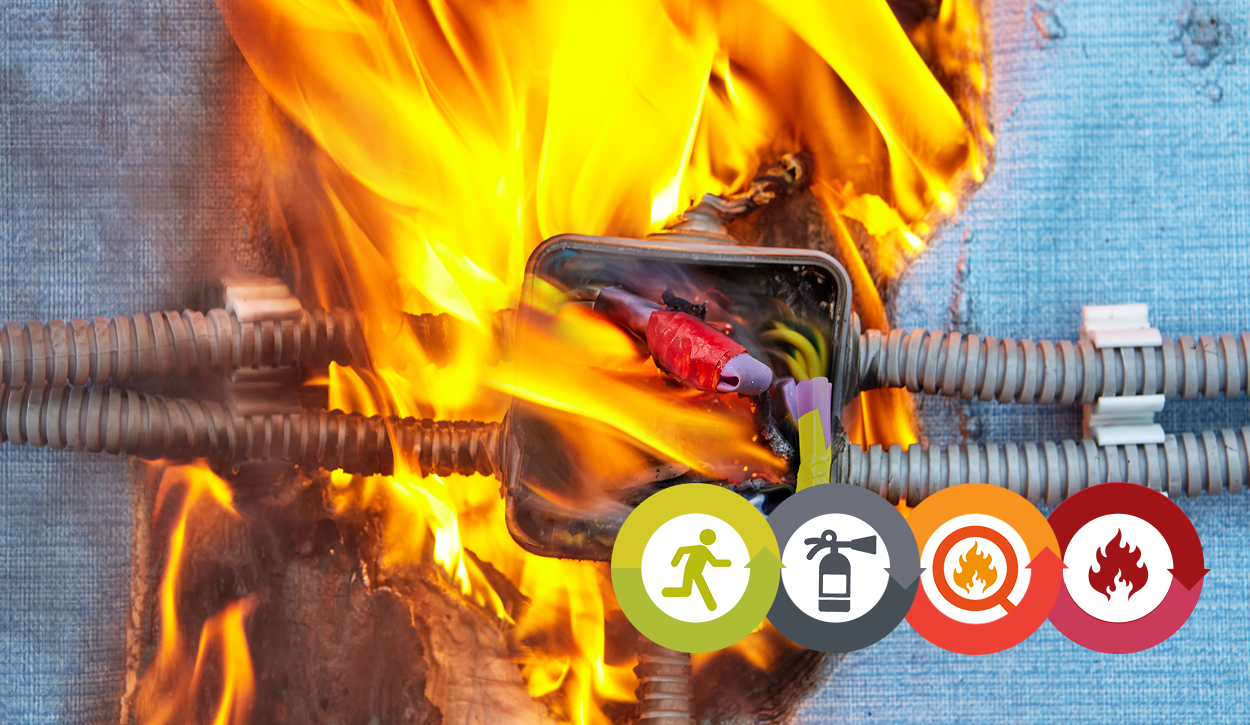Fire Safety In The Workplace & What You Need To Know
Most of us spend our working lives in offices, factories, or commercial premises of all shapes and sizes, but how prepared are we for fire risks in these environments? Fires in the workplace can be devastating and are often caused by preventable issues such as faulty electricals, human error, and poor housekeeping. Whether you work in a modern office block or a converted heritage building, understanding your responsibilities around fire safety is essential.

Who is Responsible for Fire Safety?
While team members and staff must maintain the structural safety of a building, tenants, business owners, and managers are legally responsible for ensuring the fire safety of their workspace.
By law, every business must:
- Carry out a Fire Risk Assessment
- Develop and communicate an Emergency Plan
- Regularly review and update fire safety measures
These steps are not only legal requirements under the Regulatory Reform (Fire Safety) Order 2005, but they are also good business practices that help to protect staff, visitors, and property.
Top Workplace Fire Risks
Here are the most common causes of fire in office and commercial environments:
Faulty Electrical Equipment
Overloaded sockets, damaged wiring, and poorly maintained electrical appliances are leading causes of workplace fires.
Human Error
Simple mistakes such as leaving cooking unattended, misusing equipment, or neglecting to report hazards can quickly escalate into serious incidents.
Flammable Materials
Improper handling or storage of combustible liquids, gases, or dust can increase fire risk especially if stored near ignition sources.
Smoking
Improper disposal of smoking materials, even in designated areas, can ignite flammable debris or materials nearby.
Cooking Equipment
Kitchen areas pose a particular risk, especially when equipment is left unattended or poorly maintained.
Arson
Deliberately set fires remain a serious threat, particularly on construction sites or in unsecured commercial buildings.
Clutter and Poor Housekeeping
Blocked escape routes, piled papers, and general disorganisation can turn a small fire into a major emergency by feeding flames and obstructing evacuation.
Improper Storage
Storing flammable or combustible items incorrectly especially near heat sources, significantly increases fire risk.
Lack of Equipment Maintenance
Electrical tools, heating systems, and machinery must be regularly inspected and serviced to avoid malfunction-related fires.
Poor Escape Planning
Every fire escape plan must consider individuals with limited mobility or other impairments. Safe evacuation depends on inclusive planning.
Fire Doors Wedged Open
Fire doors are designed to hold back fire and smoke for up to 30 minutes but only if they’re closed. Wedging them open defeats their purpose and endangers lives.
Outdated Fire Risk Assessments
Fire risk assessments must be reviewed regularly. In recent years, the widespread use of battery-powered devices from laptops to e-bikes, has introduced new risks. Changes in staffing, technology, and regulations also mean assessments should never be treated as a one-time task.
Conclusion: Don’t Wait for a Fire to Act
Fire safety is everyone’s responsibility. With the right training, maintenance, and regular review, workplaces can stay safe, compliant, and prepared. Don’t treat fire safety as a tick-box exercise investing in proactive fire prevention measures could save lives and livelihoods. If you haven’t reviewed your fire risk assessment recently, now is the time to do it. A fire risk assessment is a systematic evaluation of a building or workplace to identify potential fire hazards and risks, and to determine the necessary actions to reduce or eliminate those risks. It’s a crucial process for ensuring fire safety and compliance with fire safety regulations.
Ask the question!
#FireAlarms #FireRiskAssessment #FireSafetyEquipment #FireAlarmMaintenance #AccessControl #CCTV

